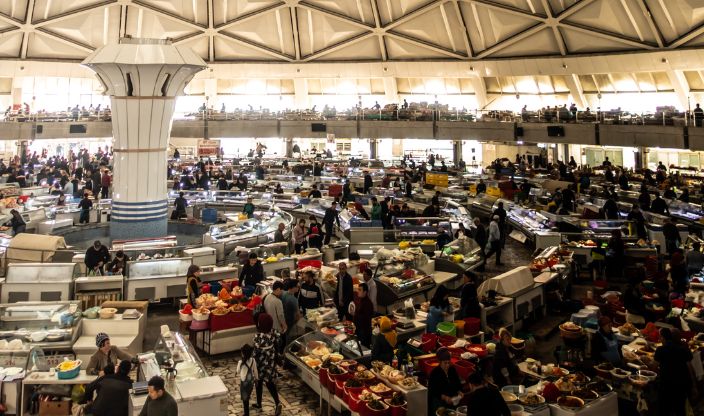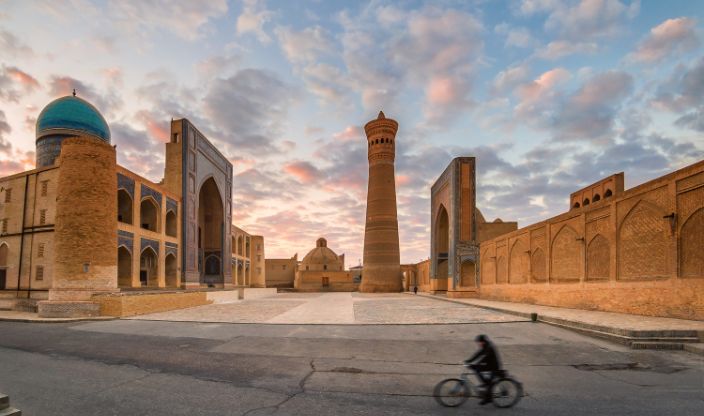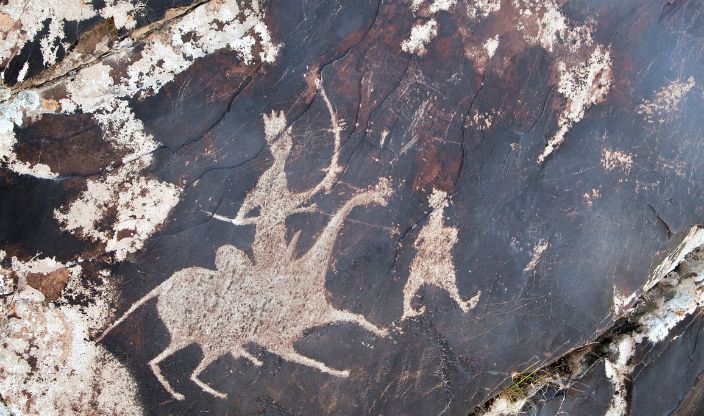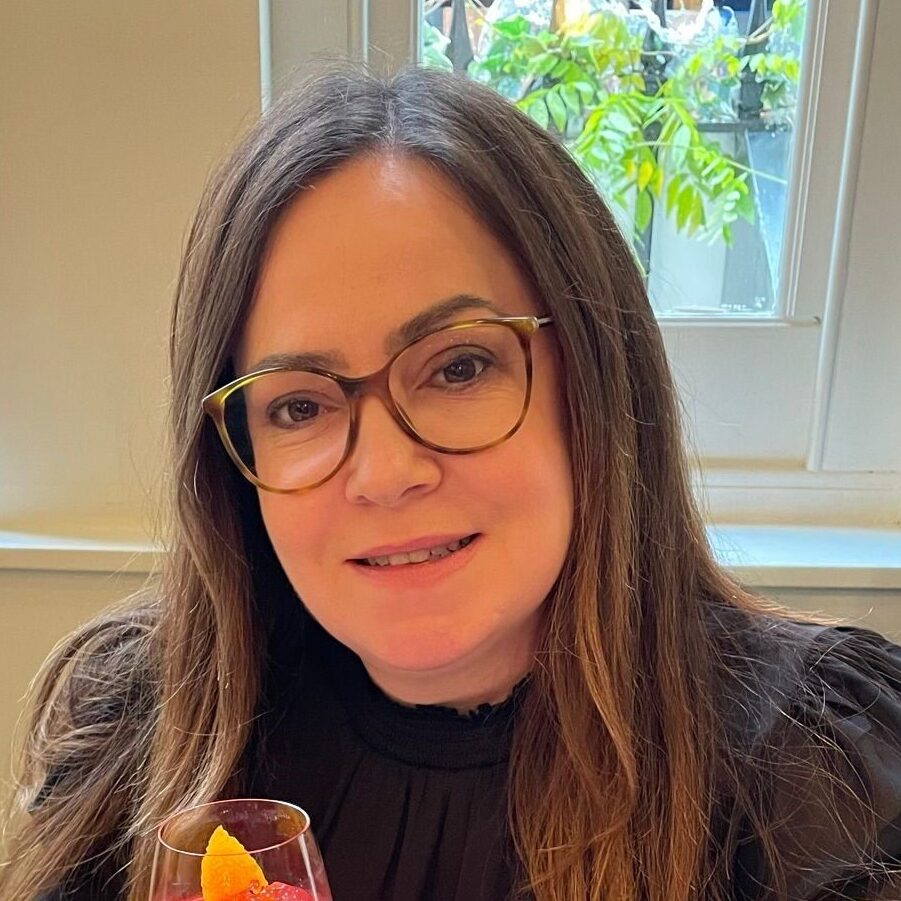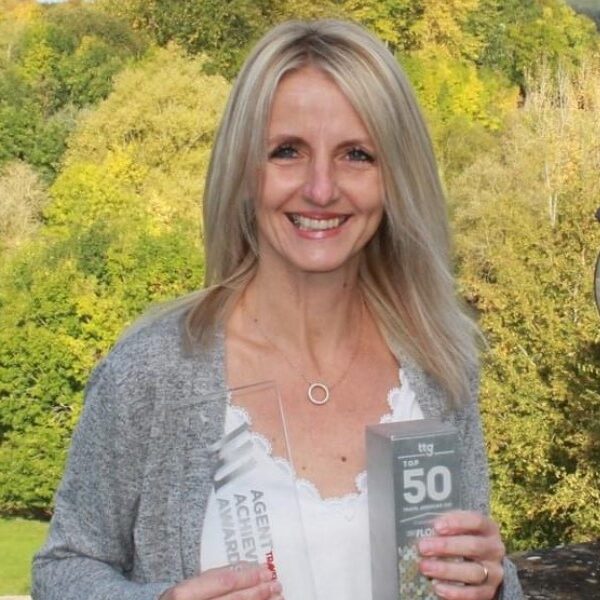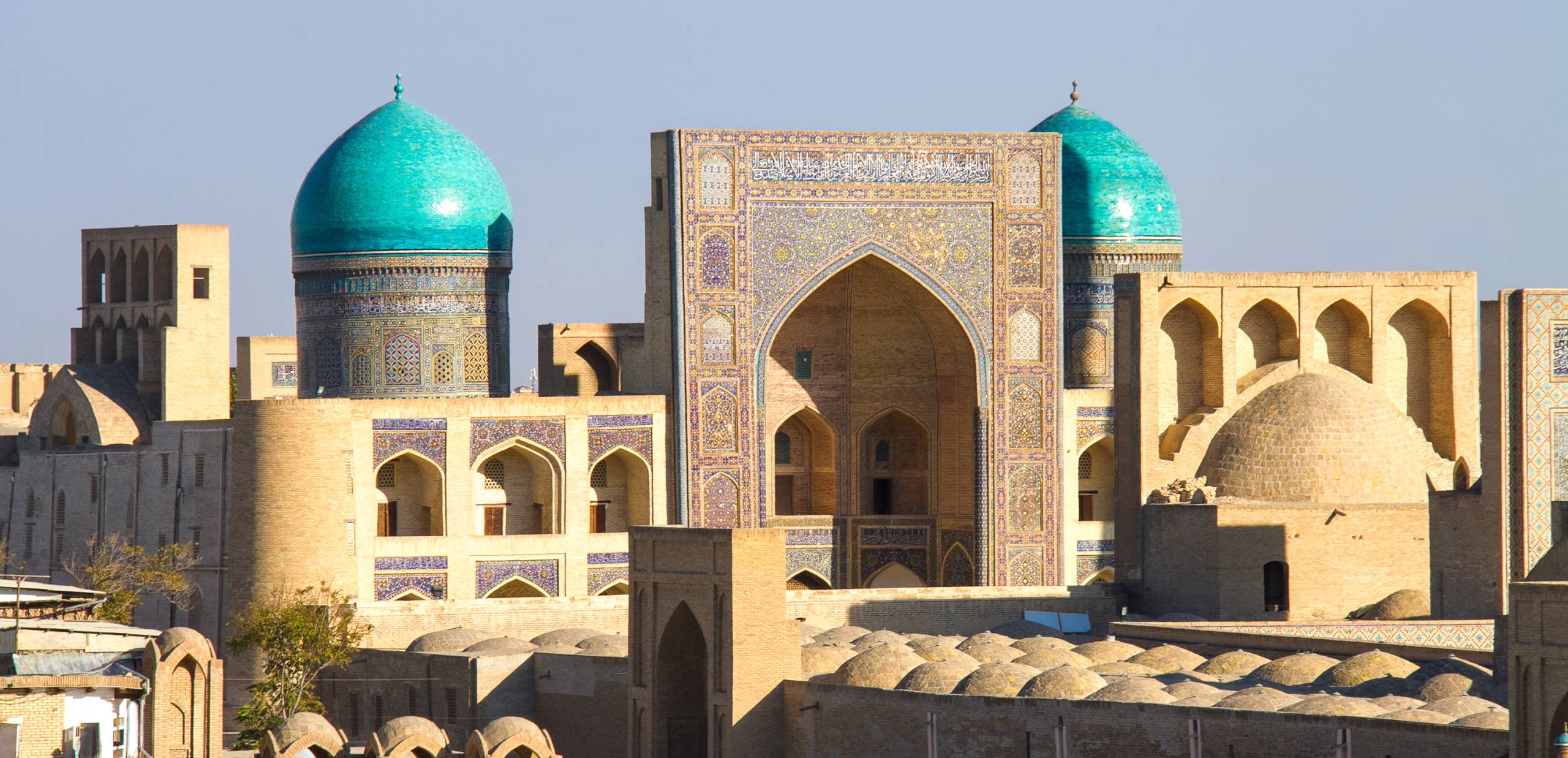Introducing Uzbekistan
Uzbekistan is an intriguing combination of dry desert, wide plains, rich dunes, and bountiful rivers. The unique history and culture of this region make it the most enticing travel destination in Central Asia, even with all the striking variety of scenery.
Located along the historic Silk Road, the country experienced centuries of invasion by surges of merchants, nomads, and invaders. The architectural heritage that is still standing is magnificent. Visit the massive palaces and fortresses of Samarkand, Bukhara, and Khiva, as well as the ornately decorated mosques, madrasas, and shrines. Both the more recent relics of Soviet control and the incredible selection of attractions in Tashkent, the capital, are intriguing, opening you up to a new cultural experience. Discover Uzbekistan’s impressive beauty, heritage and gastronomy with an adventure to broaden your horizons.
Uzbekistan is a landlocked nation in Central Asia that is south and southeast of the Aral Sea. It has borders with Kazakhstan to the west and north-east, Turkmenistan to the south-west, Afghanistan to the south (145 km), Tajikistan to the south, and Kyrgyzstan to the east.
With a total area of 447,400 km2, Uzbekistan is around the size of Sweden or only slightly bigger than the state of California in the United States.
Travel to Uzbekistan in the spring (April to May) and in the autumn for the nicest weather (September to early November). During these times, it’s usually warm and dry, with spring highs of 21 to 30 degrees and autumn lows of 14 to 30 degrees. Temperatures in the summertime can reach 37 °C. From November to March, temperatures might dip as low as 4°C, but this time of year also delivers beautiful, clear skies, which make an outstanding backdrop for any images you snap while on your vacation.
The foundation of the national diet is meat, mainly beef and lamb. While poultry is not as popular, horse meat is a delicacy. The abundance of condiments in Uzbek cuisine highlights the flavours of the dishes and leaves a pleasant aftertaste.
Plov is Uzbekistan’s national dish. This dish comes in almost 200 different variations. Its significance to Uzbek food and culture, has listed it as an Intangible Cultural Heritage of Humanity by UNESCO. To determine who can cook the best plov, competitions are held across the nation. It is made with lamb or beef that has been fried with onions and carrots that are either yellow or orange in a huge kazan (cauldron). Manty is a type of dumpling filled with lard, onions, and minced meat. It is served with ketchup, vinegar, or sour cream and is steam cooked.
Alexander the Great conquered the Uzbek territory in the fourth century B.C. after it had previously been a part of the ancient Persian Empire. The nomadic Turkic tribes that lived there were converted to Islam in the eighth century by Arab armies that had invaded and taken control of the region. The Seljuk Turks were driven out of the area by the Mongols led by Ghengis Khan in the thirteenth century, and from that point on it was a part of the empires of Tamerlane the Great and his followers until the sixteenth century. Early in the 16th century, Uzbeks invaded the region and assimilated with the local populace. The khanates of Khiva, Bukhara, and Kokand, three distinct Uzbek states, sprang from their empire. The Russian army took control of these city-states in the middle of the 19th century despite their resistance to Russian colonisation of the region.
In 1924, the region was established as the Uzbek Republic, and in 1925, it attained independence as the Uzbekistan Soviet Socialist Republic.
Go swimming in Limpopo
When in Tashkent visit the Furkat Recreation Park, which has amazing entertainment facilities for children and adults. This includes a mini zoo, swimming pool, waterpark and various restaurants and festivals that take place throughout the year.
Visit the Geological Museum
More than 40.000 unique exhibits can be found in the museum’s display. The museum itself has 12 rooms that focus on minerals, fossils, the history of Uzbekistan’s geology, ancient metallurgy, and Uzbekistan’s scientific research.
Tashkent Zoo
One of Tashkent’s most significant attractions is the zoo. 60 species of mammals, 76 species of birds, 29 species of reptiles and amphibians, and 181 species of fish, can be found at the zoo. The zoo also includes enormous tanks filled with fish, sharks, and other marine life.
Lokomotiv Amusement Park
In Tashkent, Lokomotiv Amusement Park has the most attractions to please the whole family. The park is organised into 5 distinct zones for various visitor types:
Children’s zone features vibrant, entertaining, and secure kid-friendly attractions; Fun zone is a place where teenagers and kids 10 and older may have fun. You may test out a real climbing wall and explore a ropes course in the extreme zone, which is also divided into age groups. The garden zone is a stunning green space with terraces, arbours, reservoirs, and even a manmade waterfall on the park’s eastern side. The area surrounding the fountain with the cafe is known as the “chill out zone,” where you may rest, dine, or simply seek refuge from the heat of the summer.
Recommended Uzbekistan Specialists
Top Locations in Uzbekistan
